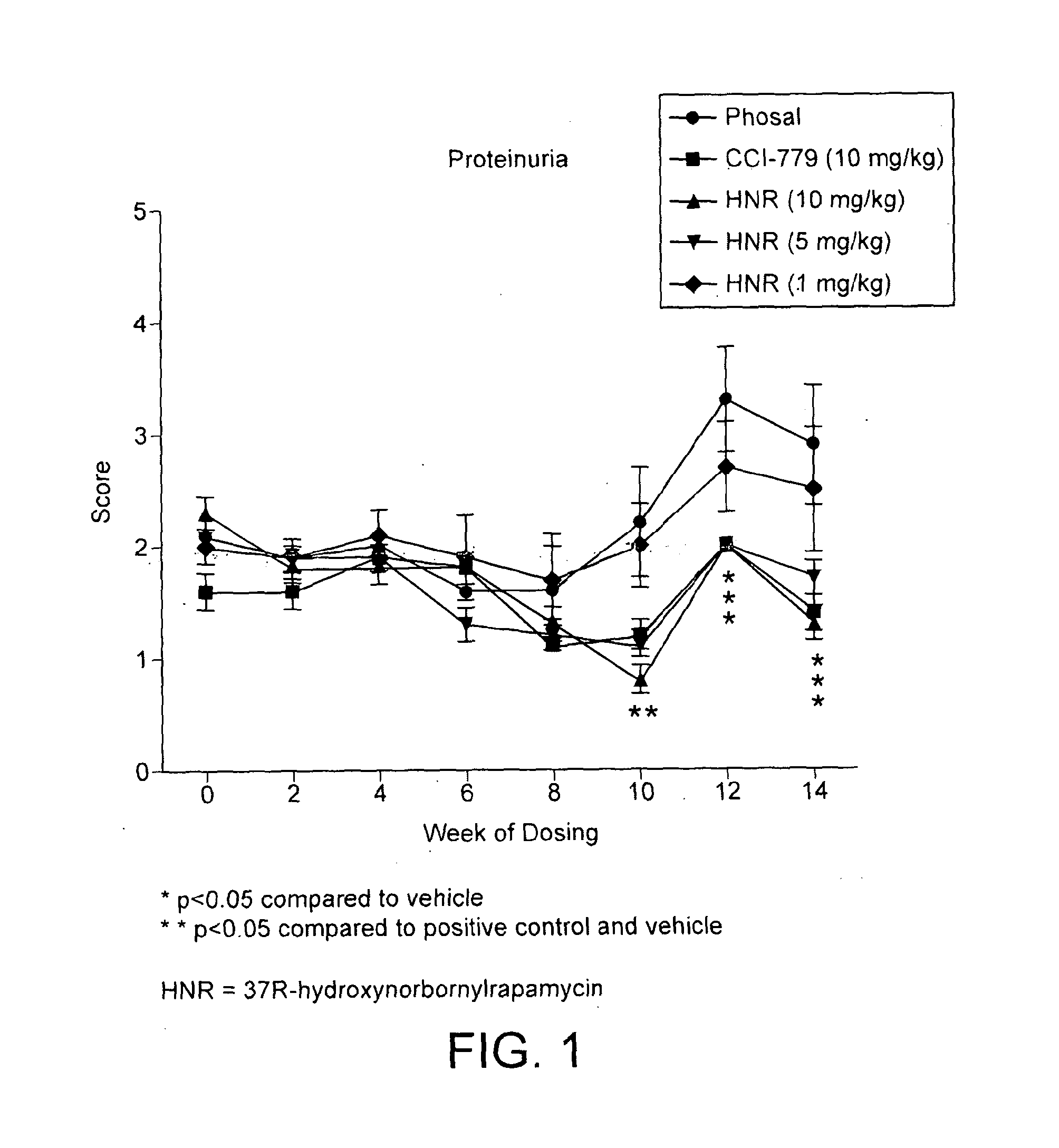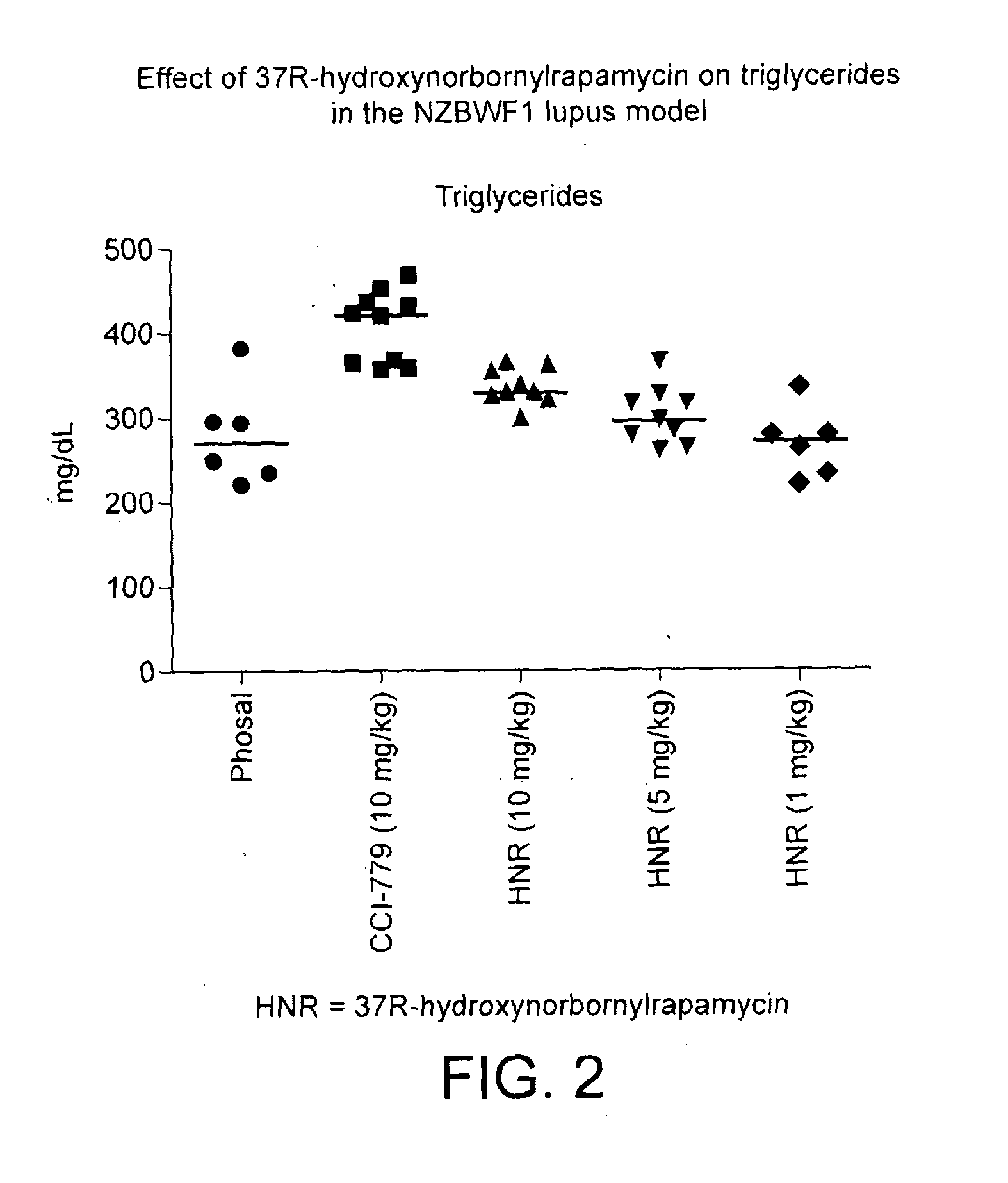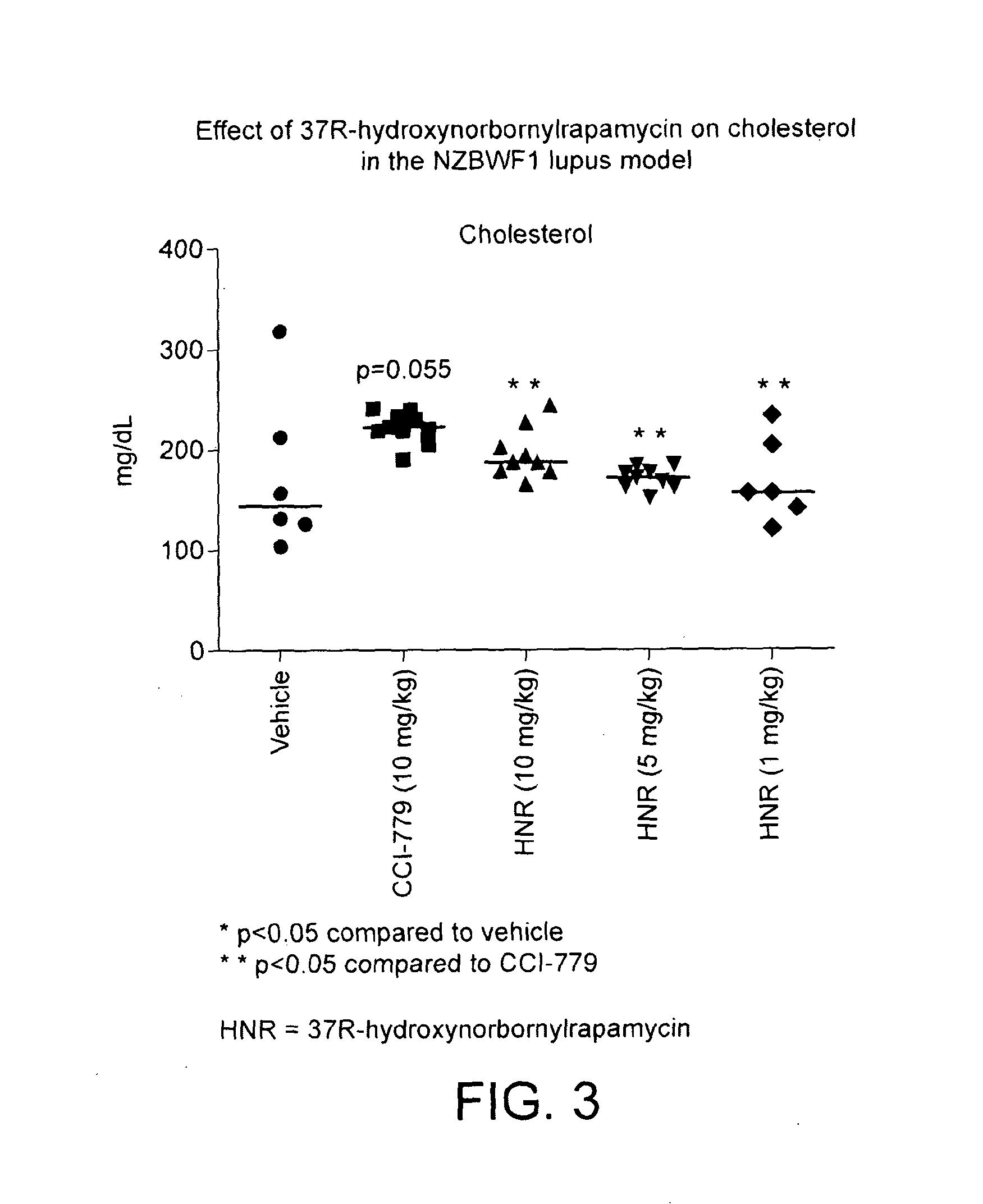Novel rapamycin analogue
a technology of rapamycin and analogue, which is applied in the field of multi-system autoimmune diseases, can solve the problems of loss of self-tolerance, incomplete recovery of function, and no patients discontinued, and achieve the effect of less effect on the elevation of lipid/triglyceride and circulating lipid/triglyceride levels
- Summary
- Abstract
- Description
- Claims
- Application Information
AI Technical Summary
Benefits of technology
Problems solved by technology
Method used
Image
Examples
example 1
Generation of S. hygroscopicus BIOT-4010 or MG2-10
[0127]For methodology to generate S. hygroscopicus MG2-10, refer to example 2 in WO2004 / 007709. This strain can be used in place of BIOT-4010 to generate 37R-hydroxynorbornylrapamycin, following transformation, using standard protocols, with a vector expressing rapIJMNOL, such as pLL158 (WO2006 / 016167, Gregory et al., 2012).
[0128]BIOT-3410 is a higher-producing derivative of the rapamycin-producing strain of S. hygroscopicus NRRL5491, generated by mutagenesis and selection of higher producing variants and BIOT-4010 is a mutant of BIOT-3410 in which rapK has been specifically deleted, using similar methodology to that described for S. hygroscopicus MG2-10. BIOT-4010 is therefore a higher producing variant of S. hygroscopicus MG2-10, based on the selected strain. However, S. hygroscopicus NRRL5491 itself, or a derivative, could be used to generate a strain able to produce compounds of the invention.
[0129]Our strategy took advantage of ...
example 2
Fermentation and Isolation of the Test Compounds
1.1 Fermentation and Isolation of 37R-Hydroxynorbornylrapamycin
Liquid Culture (Small Scale)
[0131]A single agar plug of BIOT-4010 was used to inoculate RapV7 seed media (7 mL) in a Falcon tube (50 mL) plugged with a foam bung and cultured at 28° C. and 300 rpm (2.5 cm throw) for 48 h. MD6 production media (7 mL) was inoculated with this seed culture (0.5 mL) using a wide-bore tip and fermented for 6 days at 26° C. and 300 rpm (2.5 cm throw). (1R,2R,4S)-bicyclo[2.2.1]heptane-2-carboxylic acid, (1R,2S,4S)-bicyclo[2.2.1]heptane-2-carboxylic acid or (1R*,2R*,4S*)-bicyclo[2.2.1]heptane-2-carboxylic acid (also known as (±)2-exo-norbornanecarboxylic acid) was added after 24 h growth in production media. Feeds were typically prepared as a 0.32 M stock solution in methanol and 50 μL was added to each tube to give a final concentration of 2 mM.
[0132]37R-hydroxynorbornylrapamycin results from feeding (1R,2R,4S)-bicyclo[2.2.1]heptane-2-carboxylic a...
example 3
In vitro bioassays for S6 Kinase inhibition in Jurkat cell lines
[0136]37R-hydroxynorbornylrapamycin was tested for inhibition of phosphorylation of the mTOR substrate, S6K, in the Jurkat human T cell line. Jurkat T cells were treated with 37R-hydroxynorbornylrapamycin, CCI-779 (temsirolimus) or rapamycin for 4 hours at 37° C. Cells were harvested and lysed and equal amounts of cell lysate were analyzed by western blot. In this assay, 37R-hydroxynorbornylrapamycin displayed similar or more potent inhibition of S6K phosphoylation on Thr 389, as compared to other rapamycin analogues, as shown in Table 1:
TABLE 1CompoundInhibition of S6 Kinase (IC50, nM)37R-hydroxynorbornylrapamycin0.19CCI-7790.24Rapamycin0.45
PUM
| Property | Measurement | Unit |
|---|---|---|
| temperature | aaaaa | aaaaa |
| volume | aaaaa | aaaaa |
| temperature | aaaaa | aaaaa |
Abstract
Description
Claims
Application Information
 Login to View More
Login to View More - R&D
- Intellectual Property
- Life Sciences
- Materials
- Tech Scout
- Unparalleled Data Quality
- Higher Quality Content
- 60% Fewer Hallucinations
Browse by: Latest US Patents, China's latest patents, Technical Efficacy Thesaurus, Application Domain, Technology Topic, Popular Technical Reports.
© 2025 PatSnap. All rights reserved.Legal|Privacy policy|Modern Slavery Act Transparency Statement|Sitemap|About US| Contact US: help@patsnap.com



